Sooji ka Halwa is one of the most common Indian desserts made using Semolina, ghee, milk and sugar as the base ingredients. Sooji ka Halwa is quick to make and healthy too. Known by different names all over the country, it is more or less similar in preparation. It is known as Sajjige, Sheera, Kesari Bhath in some parts of the country. It is made using various ingredients banana, pineapple, edible camphor, cardamom, clove.
Unlike other halwas this halwa is very crunchy and crispy. We call this ‘Naniji ka Halwa’ at home. This sooji ka halwa is crispy because of the method in which it is prepared. The name is self explanatory. It is a recipe that I learnt from my husband’s granny. We all have a favourite dish and this Halwa is his most favourite dish in the entire world. After marriage the first time I visited nani, he asked me if I could learn to make this Halwa. So there was no better dish that I could make for him on his birthday.
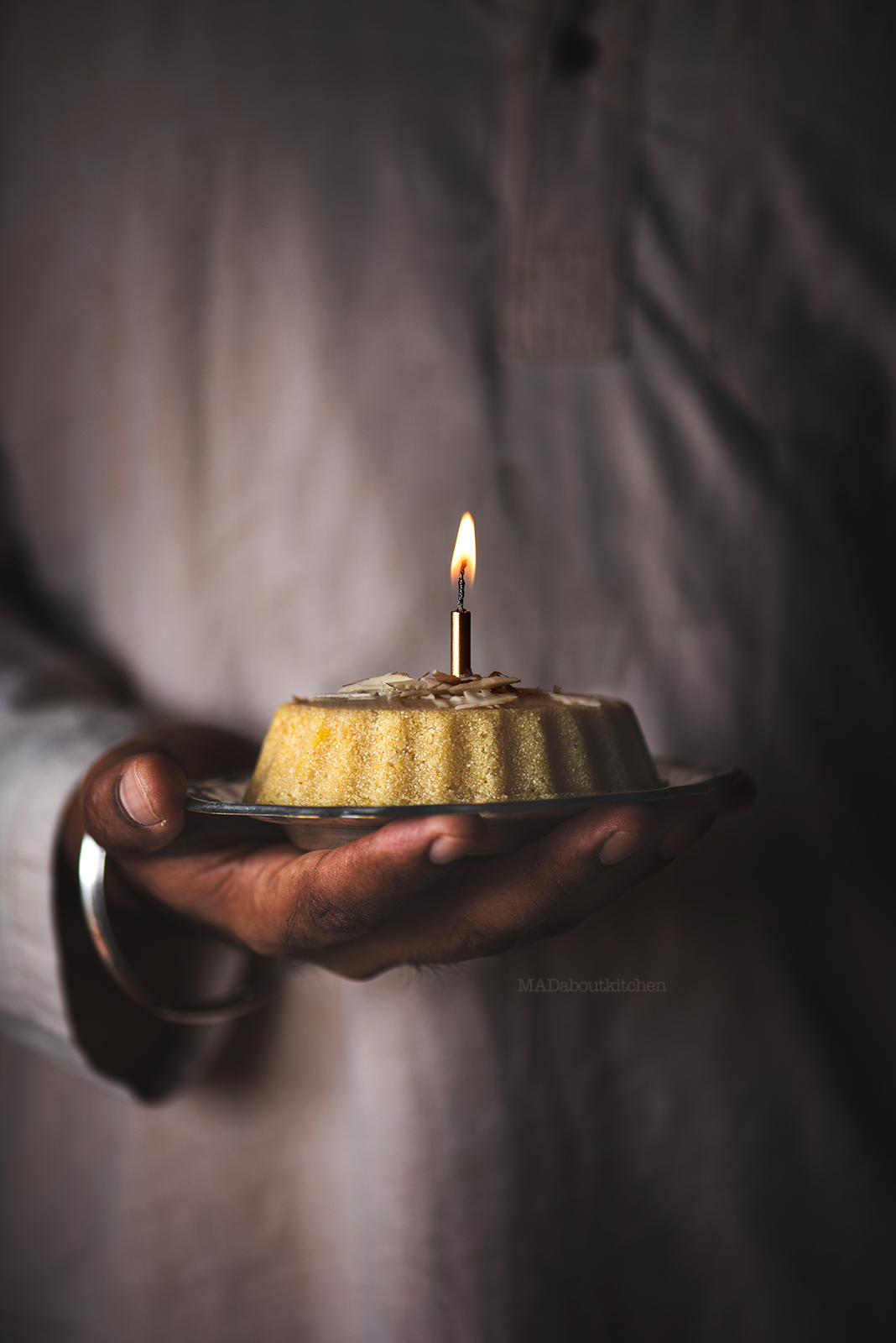
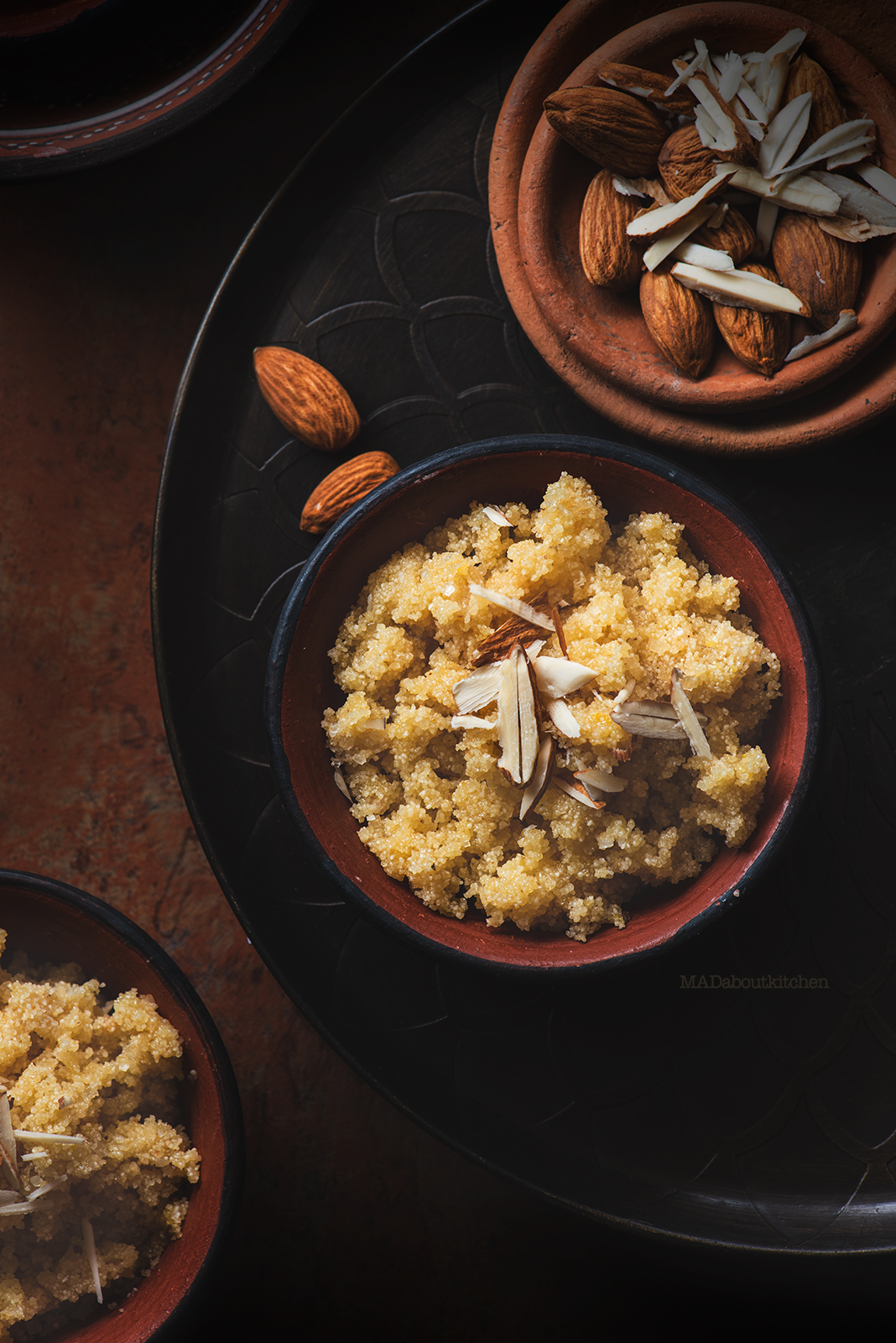
Ingredients:
1 cup – Sooji / Rava/ Semolina
1/4 cup – Fridge cold Milk
1/3 cup – Sugar
2 Tbsp – Ghee
1/2 Tbsp – Flaked Almonds
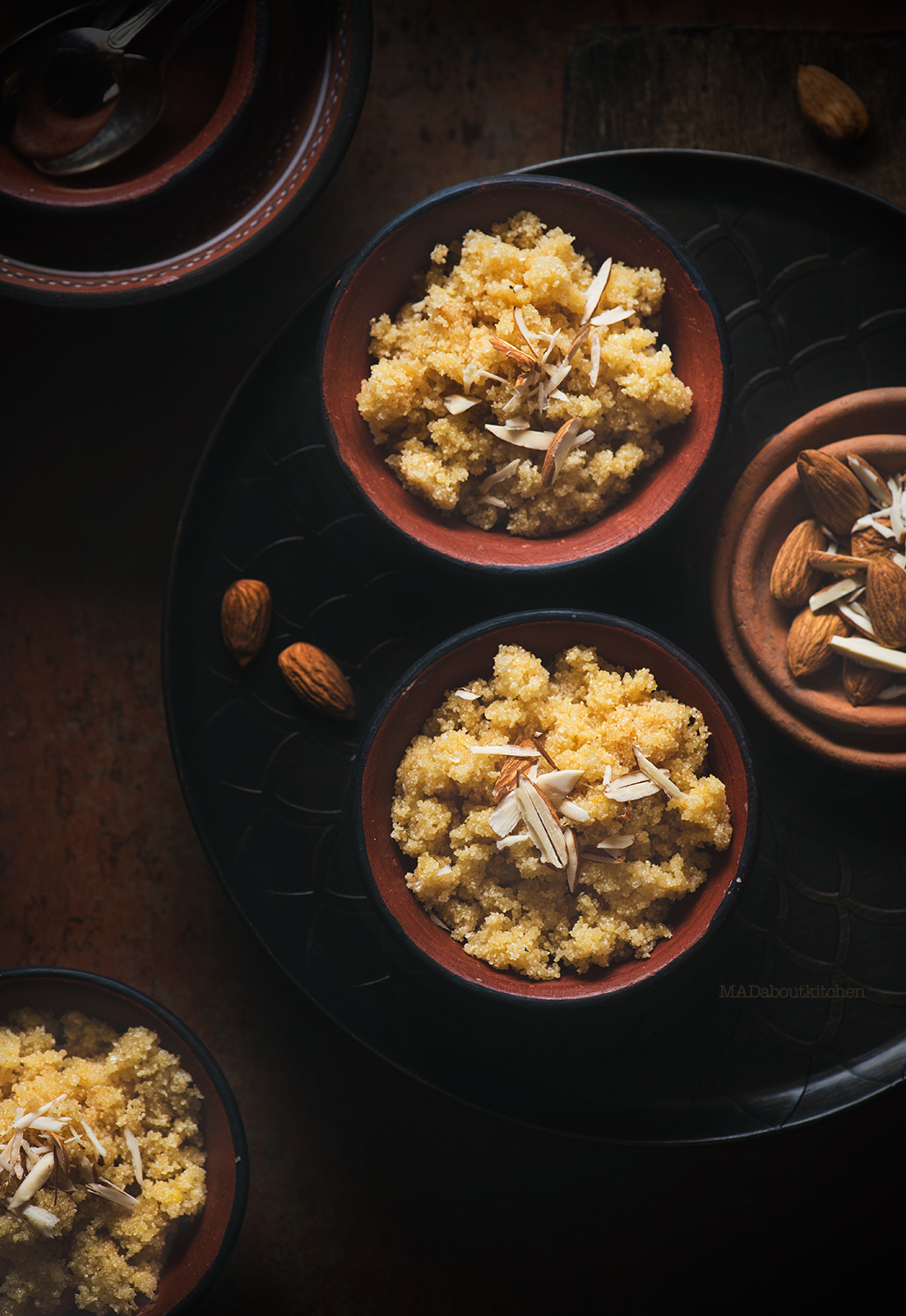
Method:
In a heavy bottom kadhai, roast sooji along with ghee.
Keep stirring so that the sooji doesn’t burn.
Keep the flame on low.
When the sooji turns light gold in colour add the sugar and keep stirring.
The sugar starts melting and starts coating the grains of sooji.
It will start caramelizing and the whole mixture will start turning gold in colour.
At this time carefully add the cold milk into it.
It will start splattering and crackling. Do not worry!! The mixture will turn hard.
Switch off the flame and give it a good mix.
Serve immediately by garnishing it with flaked almonds.
This Halwa is dryer compared to the regular sooji ka halwa/ Sajjige.
The crispiness comes due to caramelising of sugar along with rava and less amount of milk. Make sure you roast the sooji and sugar well before adding milk.
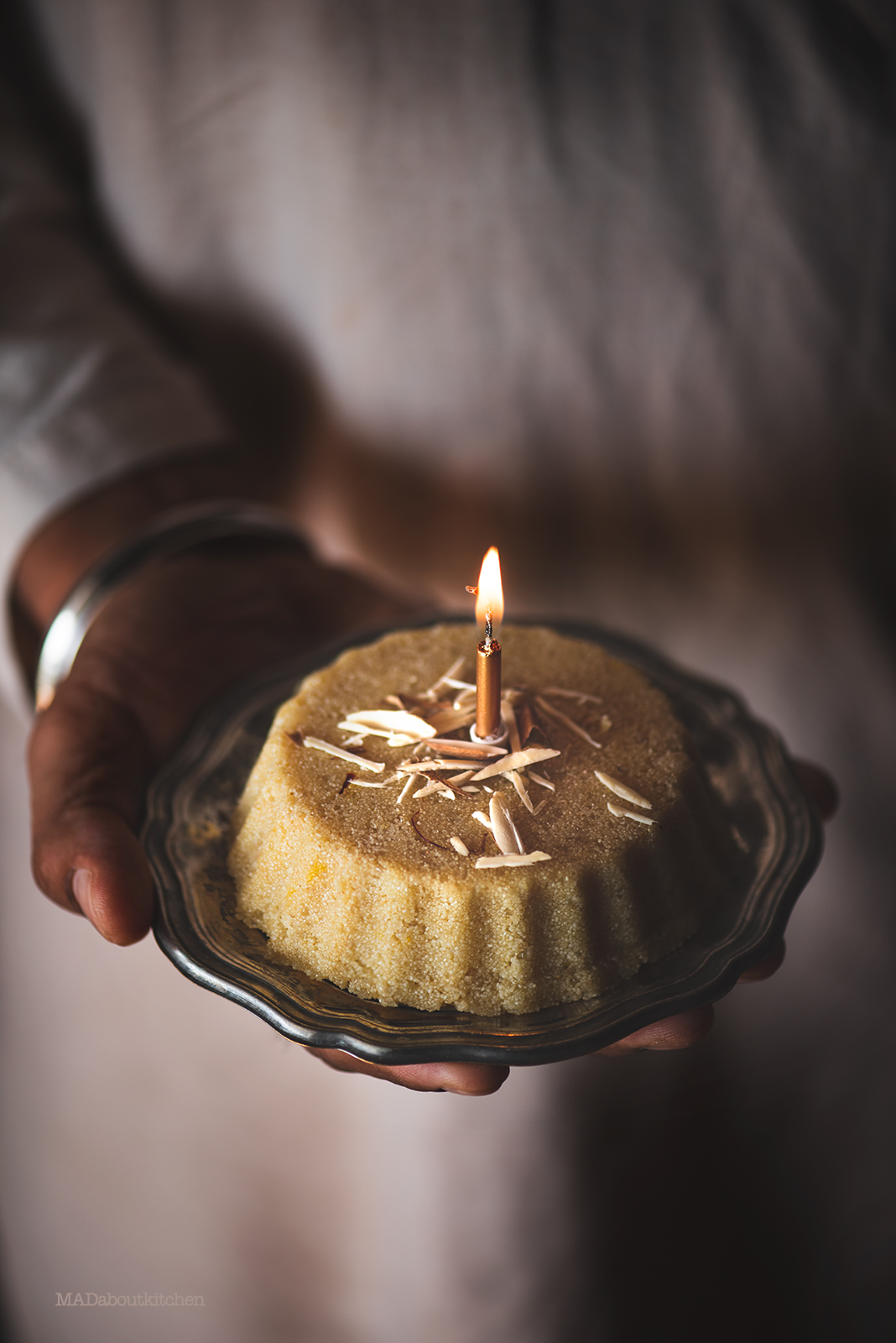
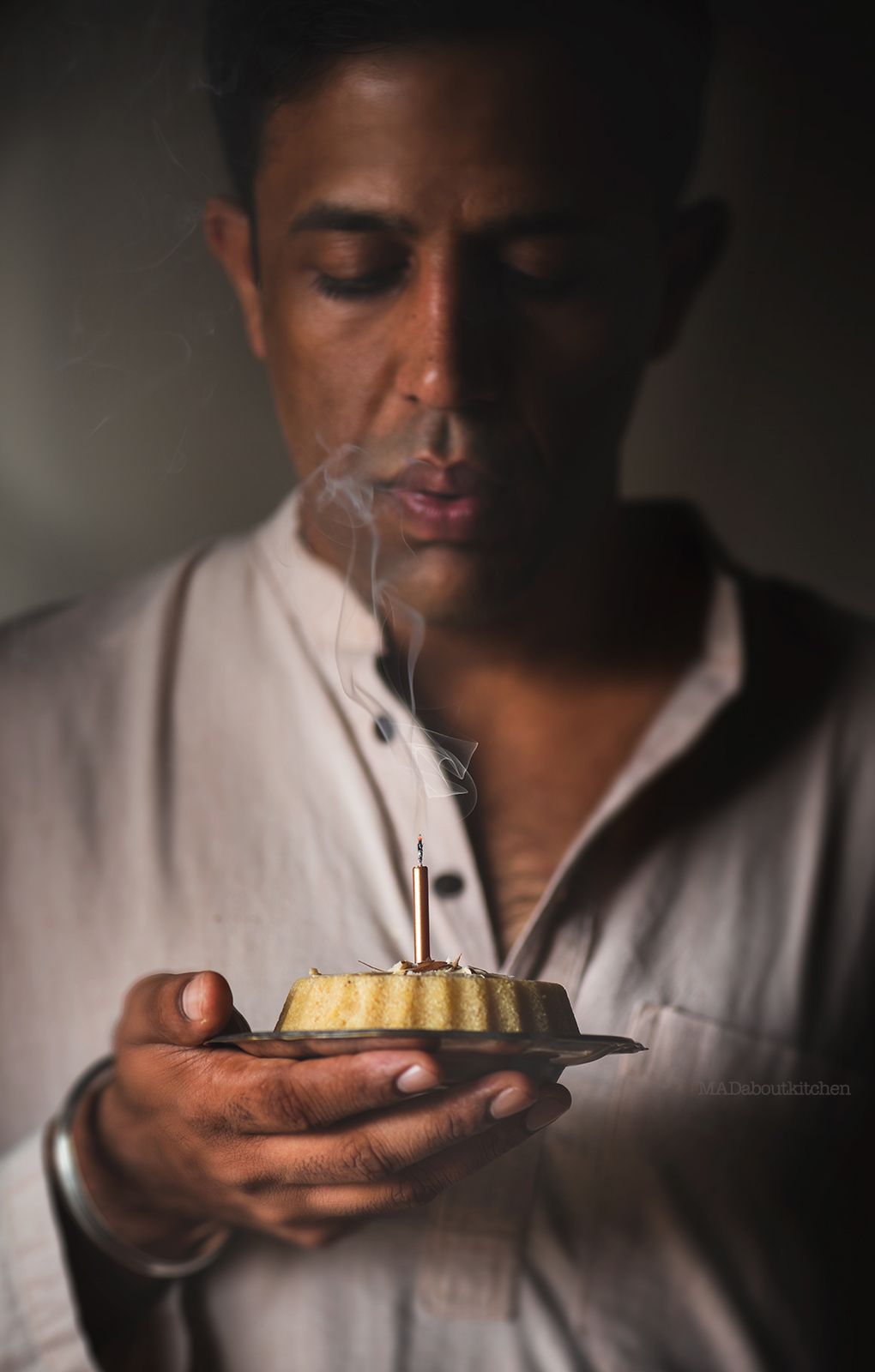
- 1 cup - Sooji / Rava/ Semolina
- ¼ cup - Fridge cold Milk
- ⅓ cup - Sugar
- 2 Tbsp - Ghee
- ½ Tbsp - Flaked Almonds
- In a heavy bottom kadhai, roast sooji along with ghee.
- Keep stirring so that the sooji doesn't burn.
- Keep the flame on low.
- When the sooji turns light gold in colour add the sugar and keep stirring.
- The sugar starts melting and starts coating the grains of sooji.
- It will start caramelizing and the whole mixture will start turning gold in colour.
- At this time carefully add the cold milk into it.
- It will start splattering and crackling. Do not worry!! The mixture will turn hard.
- Switch off the flame and give it a good mix.
- Serve immediately by garnishing it with flaked almonds.
- This Halwa is dryer compared to the regular sooji ka halwa/ Sajjige.
- The crispiness comes due to caramelising of sugar along with rava and less amount of milk. Make sure you roast the sooji and sugar well before adding milk.
Hi Madhuri, i tried this halwa and it turned out yummy, though it was a bit too crunchy as i think i overcooked it!! Will definitely make again 🙂
Hey shwetha, thank you for getting back 🙂 happy that you liked it. The reason why it would have got crunchy is may be because of less milk. In such case add a dash of milk more and mix it well before serving. Hope this tip works 🙂
Thank you for the suggestion 🙂
I stumbled upon ur blog n this recipe today morning and tried it .. Shud say it was simple and turned out yum.. Hats off to your naniji.. I used raisins in lieu of nuts.. Yummy..
Hey Ritushree, this is the first recipe of my blog and means a lot. I so glad you liked it ?